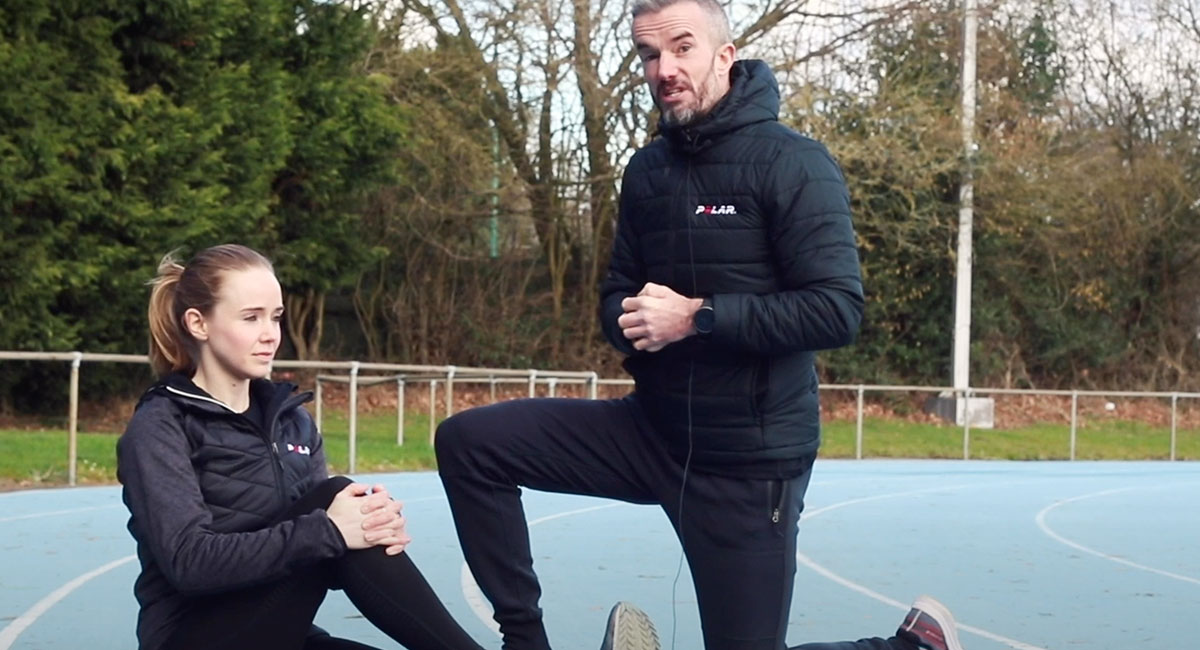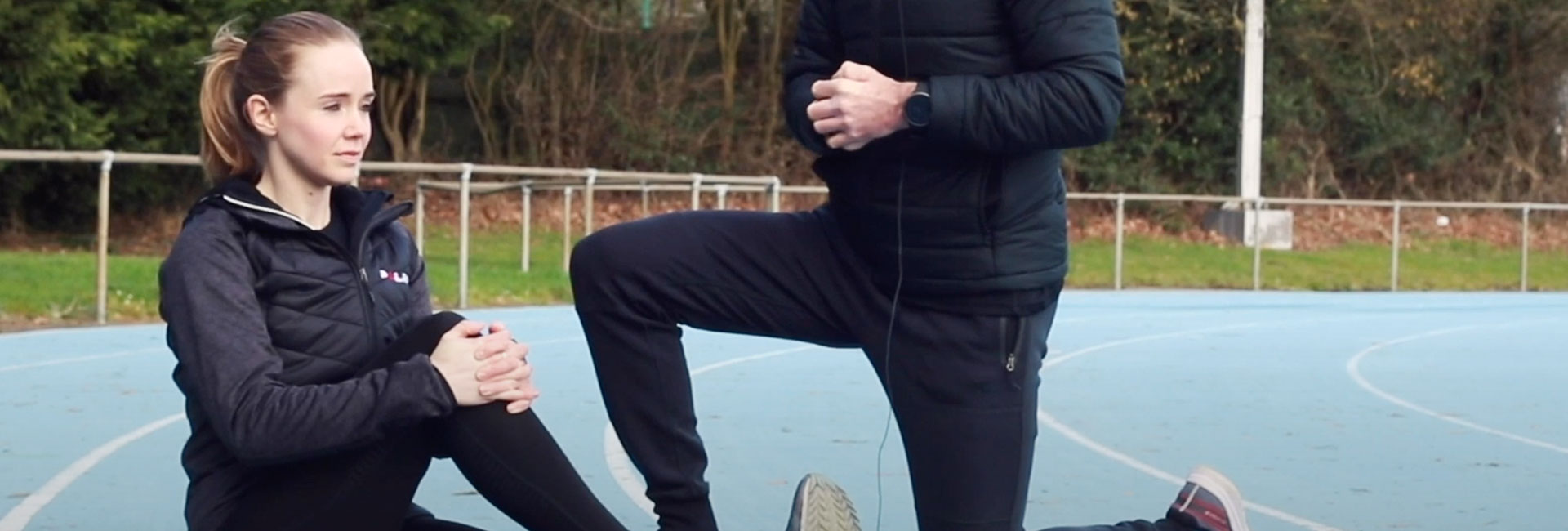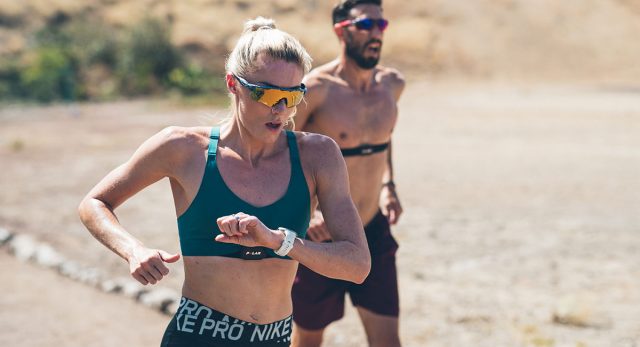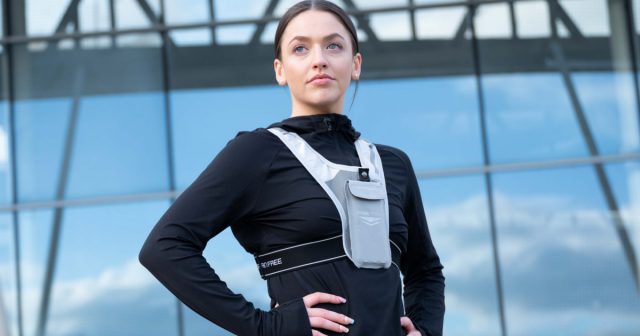When running isn’t enough (and it certainly never is), you need to add variety to your training! These supportive exercises for runners are a great way to mix things up but they’re also crucial for building strength, improving mobility, and boosting recovery – all of which you need to become a better runner.
Running coach Nick Anderson has put together these simple yet supportive exercises for runners – warm-ups, core strength, and stretching – to supplement your training.
WARM-UP DRILLS
Should you warm-up before every run? Well, that depends.
If you’re going for a long, relaxed run, then you’re probably best starting out with a walk, then building to a jog. This way, you can spend the first 10 minutes finding your pace while you get your body moving and warmed up from within.
However, if you’re planning on doing a faster run or heading out for a 5k or 10k run, then starting with some dynamic flexibility warm-ups is a good idea. You can fire up your body and develop better form and posture with these four supportive exercises for runners.
You could do these drills after an easy run to retain posture, get the muscles firing and working well, and at the same time develop better running technique and posture.
Nick Anderson
1) Ankling drill
This warm-up focuses on the Achilles tendon and calf muscles.
Focus on landing your toes on the ground first, then drive your heel down towards the ground.
Keep your posture leaning slightly forward and your arms bent and swinging in time to activate the movement.
2) Straight leg kick-out
This warm-up strengthens your dorsiflexion in the foot and your lateral calf muscle group.
Focus on bringing your toes up towards the knee, ensuring you’re landing on the midfoot or the forefoot.
Again, you should keep your posture tilting slightly forward and your arms bent and moving to activate this drill.
3) High knee skip
This warm-up activates your hips.
Focus on bringing each knee up in turn, while touching it with the alternate hand.
This drill requires a forward lean while being light on your feet and lifting your foot up as high as your shin with each movement.
4) Hamstring sweep
This warm-up activates your hamstring and your lower back.
Drop your hips like you are sitting down, with one leg bent and the other straight out with your heel down and toes pointed up.
At the same, sweep your arms forward like you are ‘feeding the chickens’ as this drill is often called.
Core Exercises
Working on your core is really important if you’re an endurance athlete and it’s easy to incorporate this 5-10 minute work out before or after a run. Create your own core circuit with these four supportive exercises for runners by rotating between them every 20-30 seconds.
The key is good posture, good form, and making sure you are in the right position.
Nick Anderson
1) Finger crusher
This simple exercise helps you to focus on engaging your core.
Lie down, with your knees raised and your feet flat on the ground.
Slide your hands underneath your spine so your fingers are touching each other and engage your core, so your spine is pressing hard down on your fingers.
You can then alternate by lifting your feet one at a time, all the while ensuring your spine is crushing your fingers.
In this position, it’s important that your hips stay on the ground at all times.
2) Plank
This is one of the most popular all-round core exercises and the position can be varied over time as your strength grows.
Start with your elbows on the ground and either your knees down with your ankles raised or your toes tucked under and your entire leg raised.
In either position, your spine should form a straight line, like a plank, with your head facing down and your neck level. Focus on your strength in your stomach, glutes, and legs.
Optional variations include lifting one arm off the ground at a time or lifting one leg up slightly. Alternatively, to activate your glutes and hamstrings together, bend one leg at the knee and pulse it upwards.
In this position, it’s important that your body remains in a straight, strong, and stable position.
3) Side plank
DID YOU KNOW? The FitSpark™ training guide – available on the latest Polar running watches – will tell you when you should opt for supportive exercises and offers ready-made workouts, incl. core.
This exercise builds on the above plank pose to strengthen your oblique abdominal muscles.
Turn onto your side, supporting your body on your forearm, with either your knees bent and stacked or your legs straight with your feet stacked.
Optional variations include a top arm rotation, where you raise the arm then thread it underneath you, or lifting your top leg or pulsing your hips up and down.
In all these positions, your hips should be lifted and your pelvis should be driving forwards at all times.
4) Bridge
This exercise will strengthen your core and glutes simultaneously.
Lie down, with your knees raised and your feet flat on the ground.
Drive your pelvis up, switching on your glutes, and holding your body in this raised, neutral position.
You can choose to keep your hands by your sides, raise them above your head or fold them across your chest.
Optional variations include raising one foot at a time off the ground or straightening the lifted leg so it is in line with your body.
In this position, your pelvis should always stay raised and your glutes engaged.
Post-Run StreTches
After your run, grab something to eat or drink to activate that recovery process straight away. Then jump into these supportive exercises for runners so you can ensure your body is in optimal condition for next time.
1) Glutes
Realign those muscle fibers, get some reoxygenated blood into the system, and start that process of you getting ready for your next run and feeling a little better.
Nick Anderson
Sit up straight, like your back and the base of your spine is up against a wall.
Extend one leg out straight in front of you and then cross the other leg over it, with your knee bent.
Place your foot on the ground and hug this bent knee in towards your chest.
Breathe deeply and hold this stretch for 45-60 seconds before swapping legs and trying it on the other side.
2) Lower back and hamstrings
Lie on the ground with your legs extended. Lift one knee in towards the chest and hug it there to begin stretching out your hamstrings.
Keep the toes on your extended leg active and pointing upwards.
Breathe deeply and hold this stretch for 45-60 seconds before swapping legs and trying it on the other side.
3) Lower back
Take the above stretch further by hugging the knee into the body then rolling it across to the opposite side.
Ensure that both your shoulders remain on the ground at all times.
Breathe deeply and hold this stretch for 45-60 seconds before swapping legs and trying it on the other side.
4) Hamstrings
On your back, keep one leg extended on the ground then raise your other leg straight up in the air.
Maintain a slight bend in the knee as you grip your thigh or calf to pull your leg towards your body until you feel the stretch in the base of your hamstring muscle.
Alternatively, use a cord or a band around the foot to pull your leg closer towards you.
Breathe deeply and hold this stretch for 45-60 seconds before trying to take the stretch a little further. Then swap legs and try it on the other side.
5) Hip flexors
While kneeling, lunge forward with one leg bent at the knee. Make sure the front knee does not go beyond your toes.
Here you should feel the stretch come up through the back thigh and hip and into your core muscles.
To improve this stretch, raise the hand on the same side of the body as your back leg, to feel it extend up through your torso. You can also bend slightly to the other side to expand that stretch further.
If it’s painful for your back knee to be in contact with the ground, put something underneath to support it.
Breathe deeply and hold this stretch for 45-60 seconds before trying to take the stretch a little further. Then swap legs and try it on the other side.
6) Upper calves
This stretch works on your gastrocnemius, which is the larger muscle at the top on your calf.
While standing, lunge forward with one leg, keeping a slight bend in this front knee but ensuring that it doesn’t go beyond your toes.
Keep the back leg straight, with the heel on the ground.
Breathe deeply and hold this stretch for 30-50 seconds then swap legs and try it on the other side.
7) Lower calves
This stretch works on your soleus, which is the muscle that extends from the Achilles tendon to behind your knee.
While standing, place one foot slightly in front of the other and then slowly begin to squat a little, keeping the back heel on the ground.
Transfer the weight of the posture onto the back foot, so you can feel the stretch come up through your lower calf.
Make sure your knees, ankles, and hips stay strong and engaged to ensure they don’t roll inwards.
Breathe deeply and hold this stretch for 30-50 seconds then swap legs and try it on the other side.
If you liked this post, don’t forget to share so that others can find it, too.
Or give it a thumbs up!
I like this article
Please note that the information provided in the Polar Blog articles cannot replace individual advice from health professionals. Please consult your physician before starting a new fitness program.





